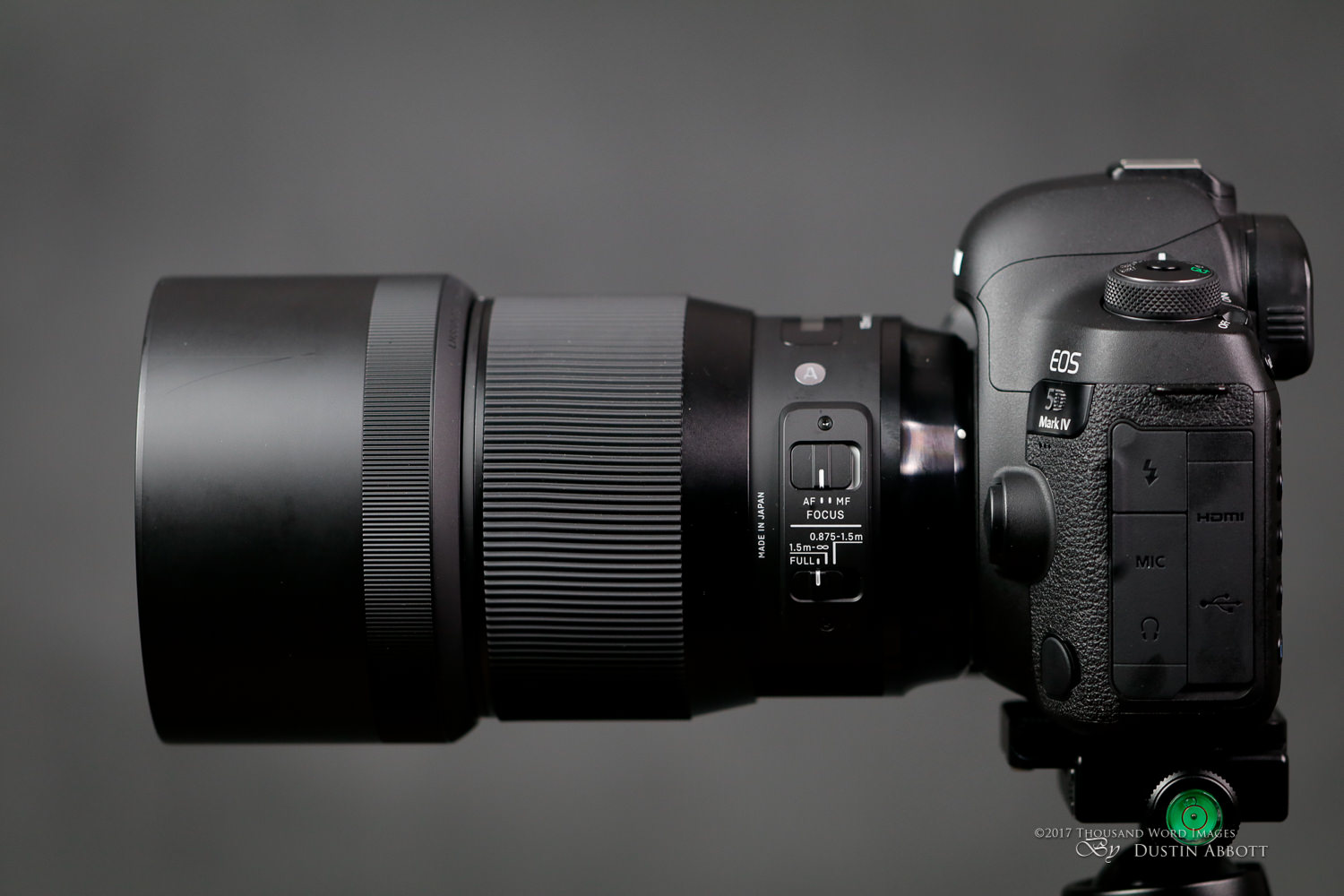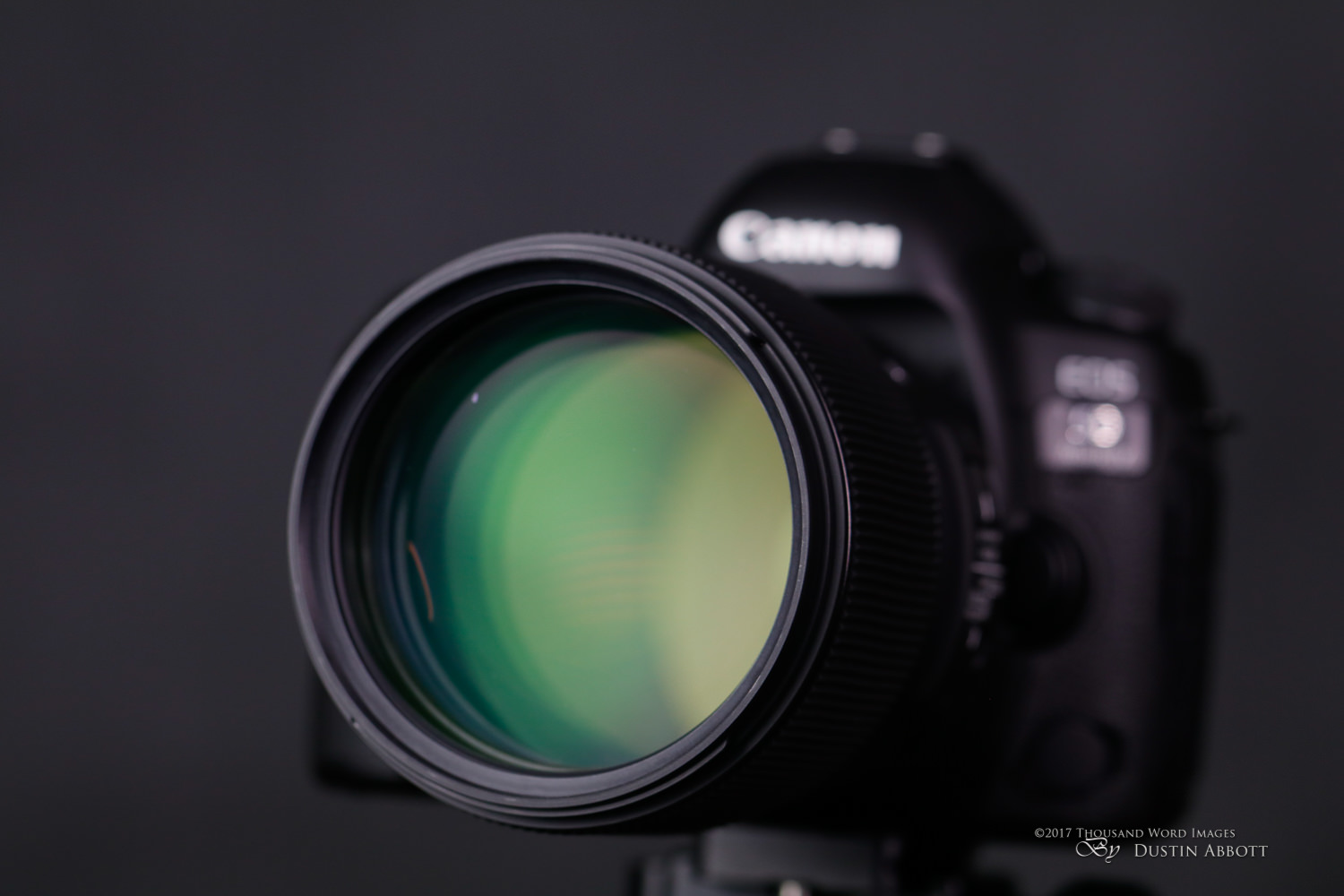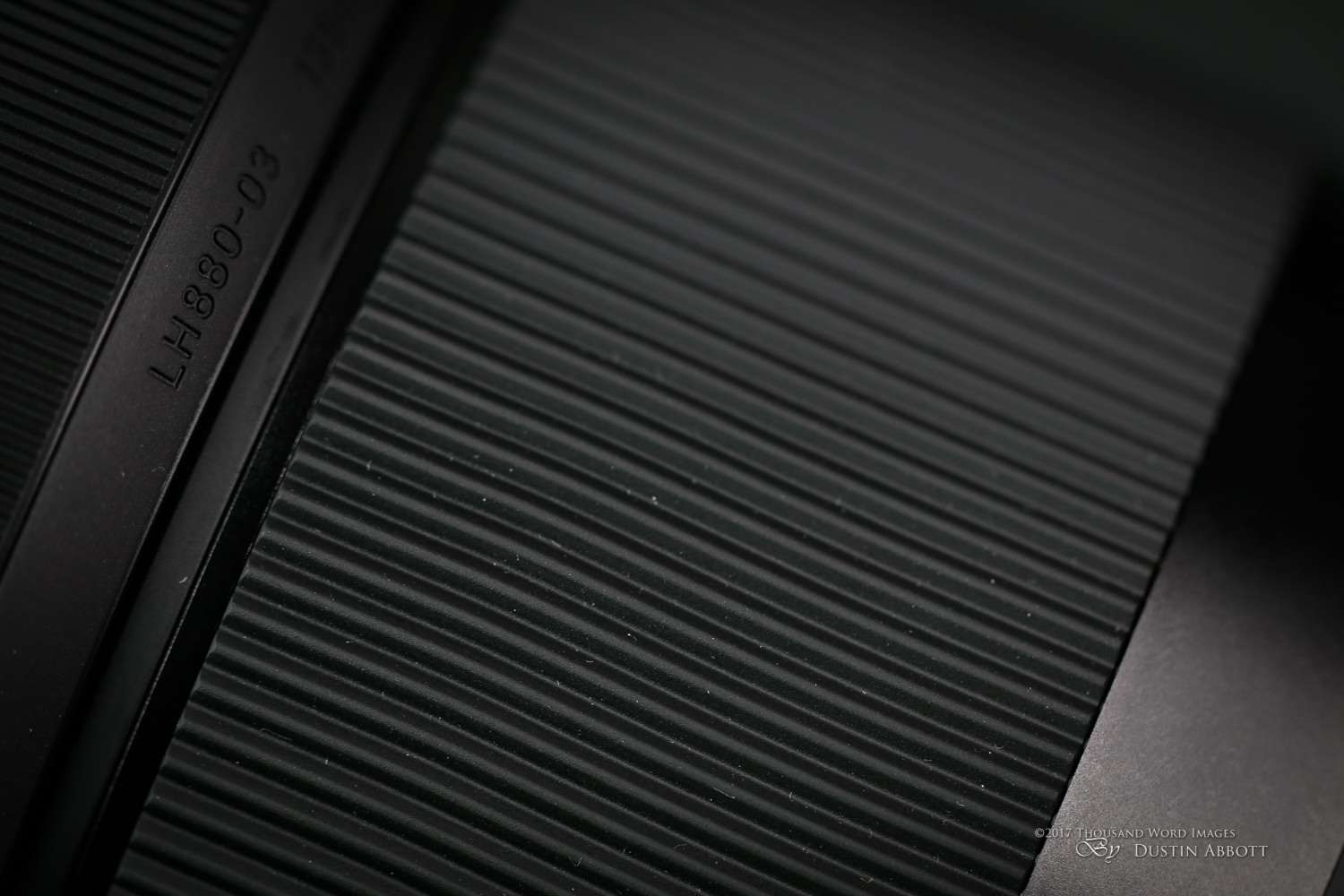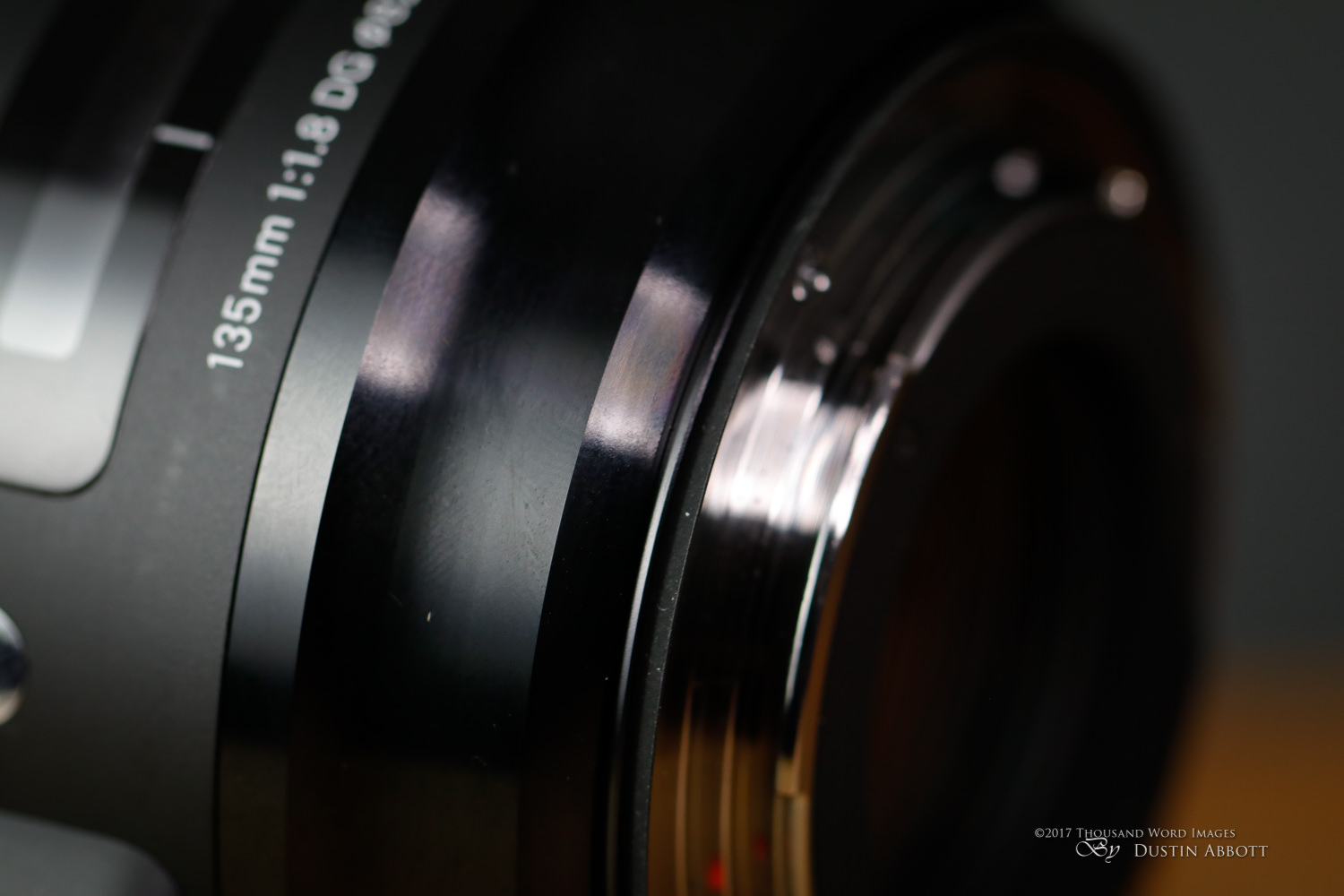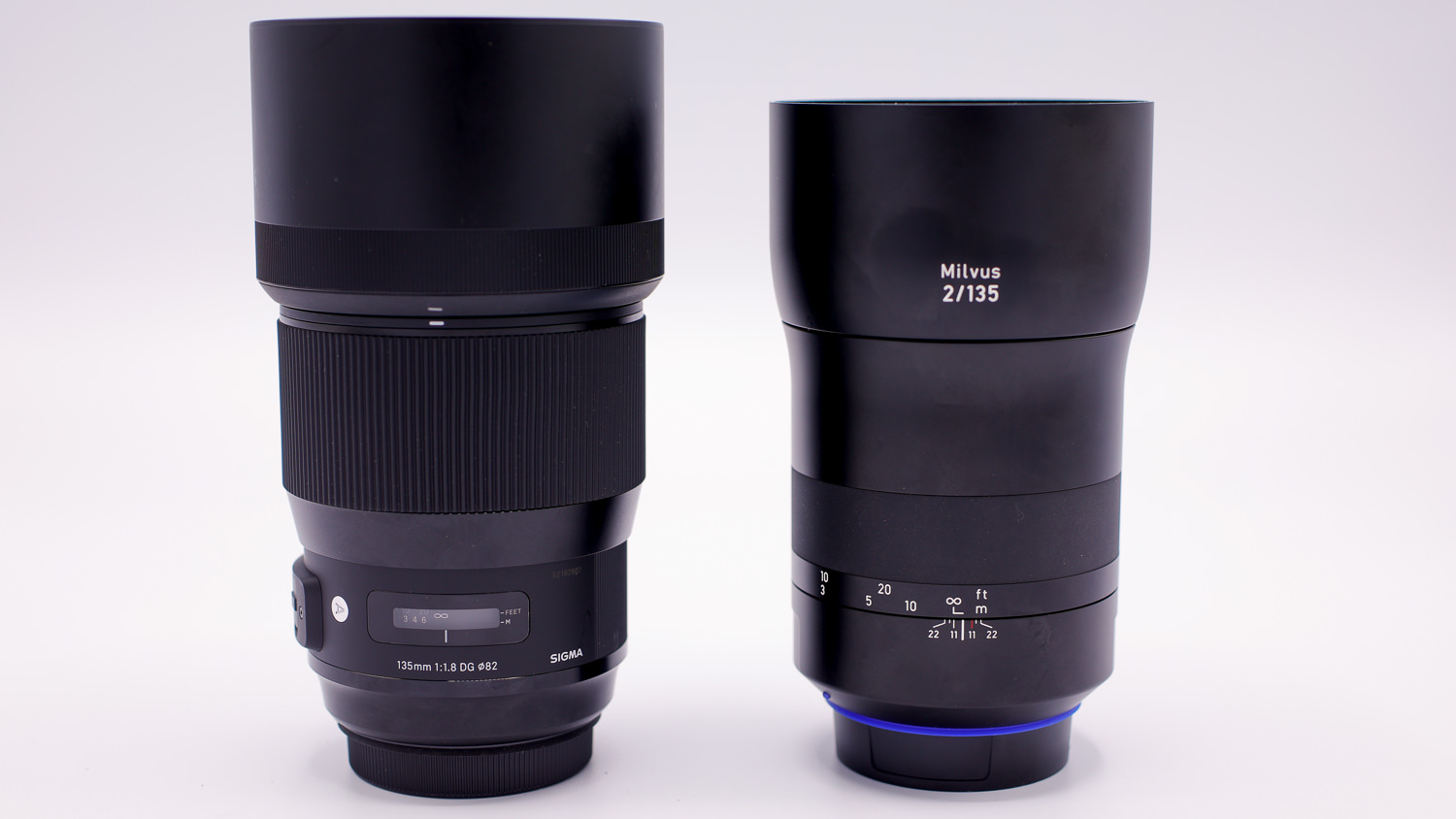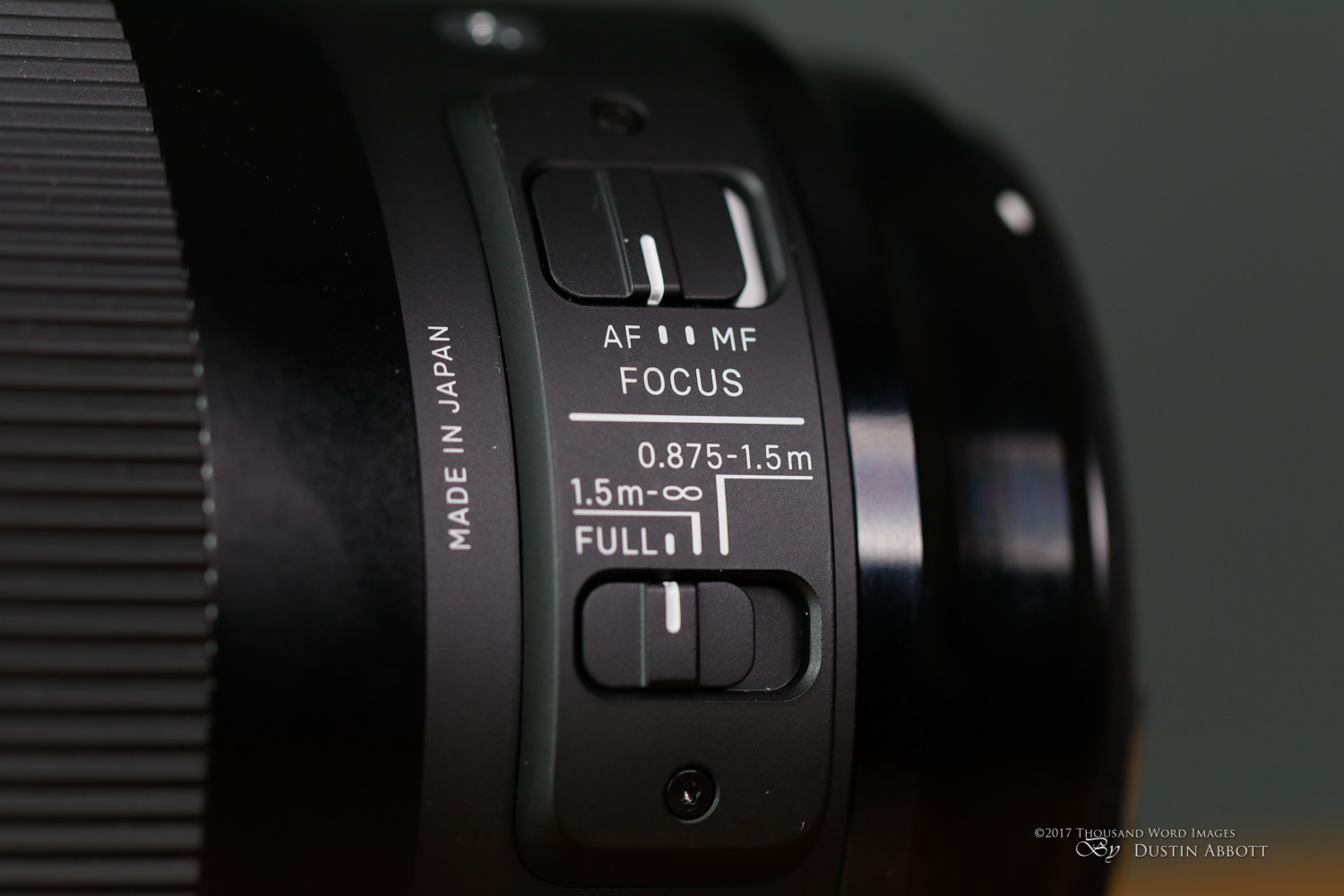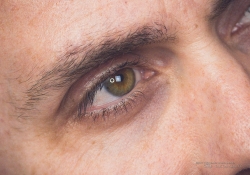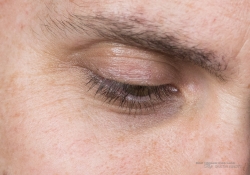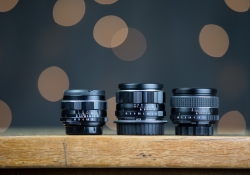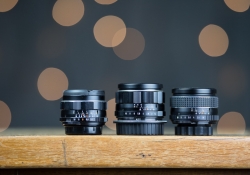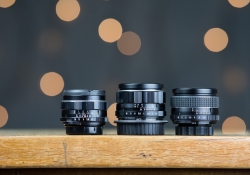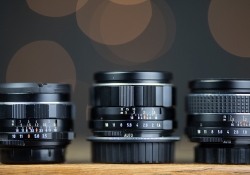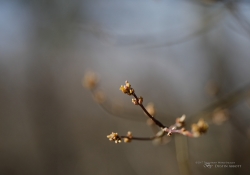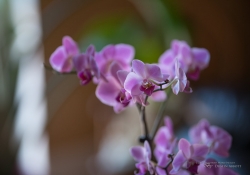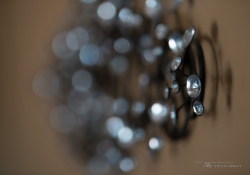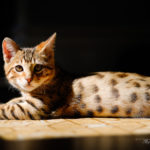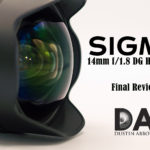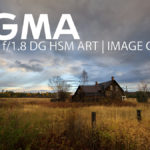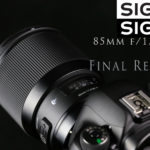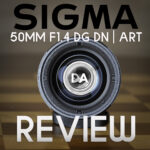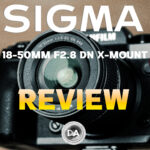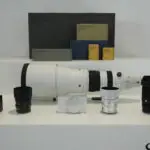Sigma has established a very clear objective with their ART series primes: deliver large aperture prime lenses with class-leading (or near to it) resolution. On multiple occasions they have pushed the envelope of what was possible in maximum aperture at different focal lengths, and, while Sony has already released a 135mm lens with a maximum aperture of f/1.8, the new Sigma 135mm f/1.8 ART trumps most competitors and sets a new standard at the focal length for Canon and Nikon shooters. The ART series has had a few significant flaws, but recent releases have seen them chipping away at things like autofocus consistency, and this lens promises to expand on that them. People have been excited since the announcement of the 135 ART…but have their hopes been realized? Read on to find out…
Prefer to watch your reviews? I’ve got you covered! Click on the thumbnail below to see my full video review of the lens.
135 ART Build and Design
Watch this video for an interactive look at the 135mm ART’s build, design, and features.
By this point I have become very familiar with the overall design of the ART series lenses, which have had a consistently excellent look and a good standard of build overall. What was lacking until recently was any kind of weather sealing, but Sigma now claims dust and splash-proof construction on the 135 ART. Like previous lenses the 135 ART is a mixture of metal and “thermal composite” (engineered plastics) and has a premium feel (though not quite Zeiss level). The bayonet mount is of a high quality brass, and Sigma is proud of the fact that this lens is made in Japan (unlike some competitors with new factories elsewhere). I’ve been consistently pleased with the appearance of ART lenses, and the 135 ART is no exception. The overall lens profile is VERY similar to that of the 85 ART released late last year (read my review here). In almost every detail the lens looks like the 85 ART, though it is just slightly smaller in most all dimensions.
The 135 ART is slightly narrower (3.6”/91.4mm vs 3.73”/94.7mm) and shorter (4.52”/114.9mm vs. 4.97”/126.2mm). It also weighs slightly less at 2.49lb/1130g vs 1139g. The front filter size is larger than competitors at 82mm, but is smaller than 85 ART’s 86mm filter size. So, while the 135 ART is a very large lens (the Canon 135mm f/2L weighs only 750g), it at least doesn’t continue to push the envelope of ever larger lenses in the ART series.
Still, if you aren’t using this on one of the larger DSLRs you will probably find it somewhat front heavy, as the design puts a lot of weight towards the front of the lens. It balances better either on larger full frame cameras or with a battery grip on a smaller one.
Like the 85 ART the lens is essentially dominated by a very large manual focus ring. The ring is nicely ridged and easy to find by touch. It moves fairly smoothly, though not quite like the better manual focus lenses. It does have good focus throw distance, and Sigma’s HSM motor does allow for full time manual override.
The lens barrel has a distance window and two switches. The first allows you to turn off autofocus and select MF only, while the second is a welcome focus limiter switch. There are three positions: Full, 1.5m to Infinity, and .87m – 1.5m. As you might have guessed, the .87m figure (2.87’) represents the minimum focus distance, which bests the 85 ART by a good margin and allows for a nice 0.20x magnification (1:5). This equals the figure for the Canon EF 135mm f/2L, but lags behind the 0.25x (1:4) of the Zeiss Milvus 135mm f/2 lens.
There will be some concerned by the upward creep in price for recent ART series releases, which after breaking the glass ceiling of $1000 in the US market have pushed ever upward to a new high (for an ART series prime) of $1399 USD ($1799 here in Canada). This makes it more expensive than the first party alternatives, and while it can be argued that it is deserving of that distinction, it still may provide a stumbling block for those accustomed to paying less for third party alternatives.
Like other Sigma ART series lenses the lens is compatible with the Sigma USB dock, their MC-11 Mount Converter for use on Sony E-Mount cameras, and also their Mount Conversion program should you switch from Canon to Nikon (or vice versa).
It should be noted that Sigma’s inclusion of dust and moisture resistance in this lens gives it a one up on the Canon 135mm f/2L, which seems like it should have weather sealing but actually doesn’t.
I see a lot to like and little to criticize in this design other than the size, which continues in the ART series tradition of being one of the largest in its class. It even tops the Zeiss Milvus 135mm f/2 in size, though by a small margin. Pushing the envelope in size and price means that this lens has to deliver in both image quality and autofocus performance. Has Sigma managed to do that with the 135 ART?
Autofocus Performance
Autofocus performance has long been the Achilles heel of the ART series in both my testing and the anecdotal evidence I receive from readers/viewers. Last year Sigma made a concerted effort to improve this area by revamping their HSM (Hypersonic Motor) to increase torque by around 30%. More torque meant more than just more speed; it meant that the lenses also reached the right destination more consistently. I saw improved autofocus performance with both the 85mm and 12-24mm f/4 ART lenses.
I’m happy to say that the trend continues here, and overall I feel like I saw roughly equal autofocus performance to what I had with the Canon 135mm f/2L. Focus speed is very fast, and the lens is fairly quiet in focus, too. A welcome addition to a lens like this is a focus limiter that allows you to choose between the full range, 0.875-1.5m, and 1.5m-Infinity. Using this appropriately can not only give you a bit more focus speed but can also eliminate some hunting in certain situations. I found autofocus speed to be very good as a result.
That’s not to say there isn’t room for improvement. While I got consistent focus results when using the center group of my 5D Mark IV, I had lower consistency when I moved to outer points, with an occasional significant miss. Here’s an example where I shot the same scene within a few seconds. On one I used an outer point, with the second I used center point focus and then a slight recompose. You can see that the focus results were excellent with the center focus + recompose shot, and completely missed when using the outer point.
This wasn’t always the case, but did happen sometimes. Using the USB Dock does help to calibrate for specific focus distances, but does less to correct something like this. Your mileage may vary, of course, but you may find you get greater consistency if you use the center group on your camera when and where possible.
One other focus quirk I encountered several times is when trying to focus on a more narrow object close to the camera (a budding branch, for example, about 4-6 feet away). The lens would often pulse back and forth, and eventually settle on the background rather than the foreground object that the focus point was right on. This is the kind of shot that I very often do, and so I know this behavior to not be typical. Further compounding this problem is that you can’t just manually override until there has been some kind of subject lock. On a few occasions I turned autofocus off and manually focused in that kind of situation. This shot is a case in point:
This could be copy specific, of course, or it could be something that Sigma could potentially address through firmware, as they have targeted focus behavior in firmware updates for other lenses. And, fortunately, that was a fairly isolated scenario that only occurred in a specific set of circumstances. In general my focus accuracy was good and I was happy with the results that I got. The lens also seemed to perform fairly well in AF Servo mode, and I shot some moving gymnasts at my children’s school with good accuracy. The lens was also good in general for shooting an event in a school gym-sized venue.
There is still room for Sigma to grow in this area, but I feel like autofocus issues are becoming less of a dominant issue with the ART series.
Image Quality
135 ART Resolution
In this video I examine how the 135 ART “stacks up” against competitors like the Sigma 85mm f/1.4 ART, the Tamron SP 70-200mm f/2.8 G2, and the Tamron SP 85mm f/1.8 VC.
Sigma’s previous medium telephoto prime, the 85mm f/1.4 ART lens (read my review here), battled for the spot of the sharpest 85mm lens in existence. And, in absolute sense, the copy of the 85 ART that I had for comparison was definitely sharper compared to the 135 ART when shooting test charts. It was sharper across the frame at basically all apertures that I compared them at.
Here’s a look at various spots across the frame with both lenses wide open.
If I stop the lenses down to f/2.8, the 85 ART still shows a notable advantage.
But this also betrays the fact that charts don’t always tell the whole story. Real photographers don’t shoot charts; they shoot out in the real world. In the real world (where we don’t have control over the light), harsher lighting transitions can produce some fairly pronounced chromatic aberrations (LoCA) on the 85 ART. See the examples here:
I wasn’t purposefully testing for this during this comparison, but I was quickly reminded that I had observed the same thing when I did the review of the 85 ART. I was also reminded that after you correct for this chromatic aberration you often lose a fair bit of contrast, resulting in less apparent resolution at wide apertures in the field. Meanwhile, chromatic aberrations are almost perfectly controlled on the 135 ART. Look at this “high risk” subject.
Both the high contrast object and the defocused one show absolute neutrality in the places where CA might exist. What this means is that the 135 ART may actually produce equal real world sharpness while upping the ante in terms of bokeh and rendering.
Just for the fun of it I did a few comparisons to Tamron’s newest medium telephoto prime (the SP 85mm f/1.8 VC – read my review here) along with their new 70-200mm f/2.8 G2 lens. The 85 VC is very slightly behind the 135 ART at wide apertures (up to f/2.8), with the lead for the 135 ART roughly consistent across the frame. See comparisons at f/1.8 from left to right:
I compared the 70-200 G2 lens (read my review here) at f/2.8 to the 135 ART. I found them roughly similar, with perhaps a bit more microcontrast for the zoom lens and roughly equal levels of sharpness. The Sigma had an extreme advantage in vignette, however, and also can let in more than twice as much light due to its larger aperture. Here’s the comparison from left to right:
I also did some extensive comparisons to what I consider to be the finest 135mm lens optically that exists – the Zeiss Milvus APO Sonnar 135mm f/2 (you can read my review here). In an absolute sense the Milvus is sharper at every aperture than the 135 ART (it very slightly bests even the 85 ART at equivalent apertures), though the competition is not completely one sided. The Milvus is sharper in the center (both lenses at f/2), it’s fairly close on the left side, but the Milvus shows superior centering and consistency and is clearly sharper on the right side.
Where the Sigma takes an easy win is in vignette, where this chart test shows the edges looking much “murkier” for the Milvus despite them sharing a light transmission value of T2. In my other tests there is also some give and take. The Sigma has slightly softer bokeh due to having a larger maximum aperture (even at equivalent apertures), and shows no “bokeh fringing” whereas the Zeiss lens shows just the slightest bit of green fringing in bokeh highlights. The Milvus has a superior maximum magnification (and performs better at minimum focus), better condition rendition, and has more contrast/microcontrast in the fine details. Watch for a future video episode where I highlight the differences between the lenses in detail, but this crop from a comparison shows that the Milvus lens shows a better performance with reproducing fine details at minimum focus. If you are considering a 135mm lens to use also with extension tubes for macro work, I highly recommend the Milvus.
Between general use and many direct comparisons I feel like I was able to get an accurate feel for the resolution from the lens. In terms of general sharpness the 135 ART slightly trails the 85 ART and the Milvus, while slightly outperforming the two Tamrons. All of these are excellent lenses, so this is an excellent performance, particularly considering that the 135 ART is the only one of the pack that is pushing the envelope in terms of maximum aperture. At wide open aperture in real world use I see a lot of stunning detail in shots:
The lens is also very sharp for portrait work:
Those that shoot mostly in a studio with controlled lighting may find the superior resolution of the 85 ART the better choice, but if you shoot a lot of environmental (outdoor) portraits I would recommend going with the 135 ART.
Second Copy Observations
I had a number of people who felt like my copy of the 135 ART used for this review wasn’t performing up to the potential of the lens. I spoke to Sigma about that, and they sent me a second (retail) copy to compare. I ran a series of head to head comparisons with the best lens in the class (the Zeiss Milvus 135mm f/2), and this video details my findings:
I recommend that you watch the video to get the full story, but in short I found that the second copy was in fact sharper than the previous copy of the lens I tested. The Milvus was still superior at short distances, and minutely better at infinity, but at medium distances the Sigma was actually a bit sharper. Very, very impressive.
Other Image Quality Observations
The 135 ART definitely excels at a number of things. One of those has been mentioned, and that is some of the best, most neutral control of chromatic aberrations I have ever seen. This really gives you freedom when shooting the lens wide open, as you just don’t see CA.
Flare resistance is also impressive, particularly when one considers how bad the Canon 135mm f/2L does in this regard. Large aperture prime lenses with a lot of glass can struggle in this area, but not the 135 ART.
I’ve also mentioned vignette, which is present at f/1.8 but isn’t heavy. The larger-than-average front element (82mm filter thread) undoubtedly helps here. If you stop down the lens to f/2 (where most of the competitors start), the lens has impressively low amounts of vignette and delivers a nicely even result across the frame.
While on a technical level the lens has slightly more distortion than the 85 ART or Milvus 135, that distortion is still so negligible as to be a real world non-issue.
There’s only two minor things to criticize. The first is that I found that when using the lens with other lenses and having an Auto White Balance set in my Canon 5D Mark IV, the 135 ART would often deliver a very different white balance than other lenses (much cooler). It’s not a difference in actual color rendering, for when I set a custom white balance the colors would be close, but for whatever reason the lens skews AWB cooler. Look, for example at the comparison between the 135 ART and the Voigtländer 40mm f/2 lens I was also reviewing at the time:
The Voigtländer colors were more true to the life of the scene. This was true with most other lenses that I would be shooting side by side. You may want to monitor your white balance if you value color matching with other lenses.
The second issue (taste issue?) is that I found that colors were a little less saturated coming out of the camera before post. Part of that had to do with the white balance issue (warm rendering favors richer color), but I also found myself boosting saturation in post a little more than usual. I favor the color rendition and micro contrast of the Zeiss Milvus 135mm, but, to be fair, this is something that Zeiss really excels at.
But adding saturation or even a completely unique look in post is something many of us do anyway. I’ve shared a number of images that I’ve “pumped up” through processing on social media to very positive effect. Here’s a look at the out of camera vs finished product:
There are many more images worth taking a peek at in the Lens Image Gallery here. All in all Sigma has done a great job with this lens, and the best is yet to come.
Bokeh
This is a key area of measurement for this lens, as while neither the Canon or Nikon 135mm f/2 lenses cannot compete in absolute sharpness, they are both capable of beautiful, artful rendering (particularly the Canon 135L). Can Sigma manage to equal the rendering of these lenses? How does it compare to the 85 ART from Sigma? Find out in the video episode here:
Without question this is my favorite Sigma lens yet for producing incredible bokeh. Whether shooting Christmas lights or isolating leaves in the woods, the lens excels at producing soft, creamy bokeh. Here’s a look at the shape of the nine bladed aperture iris as you stop the lens down.
Out in the real world I found the bokeh produced from the lens was nice and creamy. Examining the bokeh highlights reveals a much smoother, less busy bokeh circle than those produced by the 85 ART. The nature of the narrower angle of view of a 135mm lens means that backgrounds were softer even when the subject occupied the same amount of the frame while using the 85mm f/1.4 ART…even with its aperture advantage. Furthermore, the slightly larger maximum aperture of the Sigma lens meant that it produced a more diffused background even when compared to the Milvus 135mm at similar apertures. It’s definitely a special lens for making bokeh, and is, in my opinion, the most optically complete yet of Sigma’s lenses due to the great combination of sharpness and quality rendering.
Sigma’s choice to go with a slightly larger maximum aperture of f/1.8 allows this lens to be perhaps the best lens short of a 200mm f/2 lens for creating subject isolation for outdoor portraits, and should become a favorite of many environmental portrait shooters. I also noted that while the 85 ART can get a little “busy” in the transition zone right after the plane of focus, the 135 ART stays much smoother.
Here are few “bokehicious examples” from the lens.
Conclusion
While the Sigma 135mm f/1.8 ART may not win any awards for being Sigma’s sharpest, brightest, or cheapest lens, I do think that in many ways it is Sigma’s most complete prime lens. Unlike some of the ART series, I didn’t find it clinical but instead appreciated the quality rendering from the lens. It does tend to skew white balances a little cool, and it doesn’t deliver the most deeply saturated colors out of the box, but the images process well. I have seen several excellent 135mm lenses for Canon/Nikon mounts in the past two years, including the Samyang/Rokinon 135mm f/2 and the outstanding Zeiss Milvus 135mm f/2, but both of these options are manual focus only. The Sigma 135 ART is the first 135mm lens to bring the excellence of modern lens design coupled with useful autofocus. The fact that they managed to push the envelope a bit with maximum aperture is icing on the cake. While a 135mm lens is often less versatile than an 85mm lens, it also has greater potential for producing beautifully unique imagery. This lens just jumped to the top of a lot of photographer’s wish list, and I see no reason for it to be bumped from there.
Pros:
- Beautiful rending combined with excellent sharpness
- Fast autofocus that is consistent in most situations
- Quality build complete with dust and moisture resistance
- Largest maximum aperture in a 135mm focal length
- Beautiful bokeh
- Compatible with Sigma USB dock, MC-11 Mount Converter, and Mount Conversion program
- Excellent sharpness
- Complete control of chromatic aberrations
- Good flare resistance
Cons:
- Largest lens in the class
- New price point high for Sigma ART Prime lens
- Autofocus consistency drops when using outer points
- Seems to skew auto white balance cooler than other lenses
- Less color saturation and microcontrast than Zeiss Milvus 135mm
Gear Used:
Canon EOS 5D Mark IV (5D4): B&H Photo | Amazon.com | Amazon Canada
Canon EOS 6D DSLR Camera (Body Only)
Purchase the Sigma 135mm f/1.8 ART: B&H Photo | Amazon | Amazon.ca | Simon’s Canada (use code GIOTTOS MV8250 for a free Giottos monopod with purchase)
Adobe Lightroom CC Software for Mac and Windows (Boxed Version)
Adobe Photoshop Creative Cloud 1-Year Subscription
Alien Skin Exposure X2 (Use Code “dustinabbott” to get 10% anything and everything)
Purchasing your gear through B&H and these links helps fund this website and keeps the articles coming. You can also make a donation here if you would like. Thank you for your support.
Great News! I can now offer a 5% discount on all purchases at Amplis Foto, Canada’s Leading Photographic Supplier. Please enter discount code: AMPLIS52018DA in your cart. It is good for everything in your cart, and is stackable with other coupons, too! It will take 5% off your entire order! Proceeds go towards keeping this site going and providing you with new reviews!
Check me out on:
Google+: | Facebook: | Twitter: | Flickr: | 500px: | Sign Up for My Newsletter :




